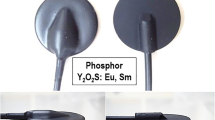Abstract
Introduction
We have conducted a prospective study to clinically evaluate a new radiation dose observing tool that displays patient’s peak skin dose (PSD) map in real time.
Methods
The skin dose map (SDM) prototype quantifies the air kerma based on exposure parameters from the X-ray system. The accuracy of this prototype was evaluated with radiochromic films, which were used as a mean for PSD measurement.
Results
The SDM is a reliable tool that provides an accurate PSD estimation and location.
Conclusion
SDM also has many advantages over the radiochromic films, such as real-time dose evaluation and easy access to critical operational parameters for physicians and technicians.






Similar content being viewed by others
Abbreviations
- FGI:
-
Fluoroscopically guided intervention
- SDM:
-
Skin dose map
- AVM:
-
Arteriovenous malformation
- AK:
-
Air kerma
- DAP:
-
Dose area product
- PSD:
-
Peak skin dose in Gy
- PCC:
-
Pearson correlation coefficient
References
Miler DL (2008) Overview of contemporary interventional fleuroscopy procedures. Health Phys 95:638–644
Kemerink GJ, Frantzen MJ, Oei K, Sluzewski M, van Rooij WJ, Wilmink J, van Engelshoven JM (2002) Patient and occupational dose in neurointerventional procedures. Neuroradiology 6(44):522–528
Balter S, Hopewell JW, Miller DL, Wagner LK, Zelefsky MJ (2010) Fluoroscopically guided interventional procedures: a review of radiation effects on patients’ skin and hair. Radiology 2(254):326–341
Wagner LK, Eifel PJ, Geise RA (1994) Potential biological effects following high X-ray dose interventional procedures. JVIR 5(1):71–84
Cheung T, Peter KNY, Butson MJ (2005) Measurement of centi-Gray X-ray dose levels with radiochromic film. Nucl Sci 52(5):1271–1273
Balter S (2006) Method for measuring fluoroscopic skin dose. Pediatr Radiol 30(suppl 2):136–140
Johnson PB, Borrego D, Balter S, Johnson K, Siragusa D, Bolch WE (2011) Skin dose mapping for fluoroscopically guided interventions. Med Phys 38:5490
Miller DL, Balter S, Dixon RG, Nikolic B, Bartal G, Cardella JF, Dauer LT, Stecker MS (2012) Quality improvement guidelines for recording patient radiation dose in the medical record for fluoroscopically guided procedures for the society of interventional radiology. J Vasc Interv Radiol 23:11–18
Balter S, Fletcher DW, Miller DL, Balter S, Taylor MA (2002) Techniques to estimate radiation dose to skin during fluoroscopically guided procedures. J Vasc Interv Radiol 13:391–397
Bland JM, Altman DG (1986) Statistical methods for assessing agreement between two methods of clinical measurement. Lancet 327(8476):307–310
Petoussi-Henss N, Zankl M, Drexler G, Panzer W, Regulla D (1998) Calculation of backscatter factors for diagnostic radiology using Monte Carlo methods. Phys Med Biol 43(8):2237
Bednarek DR, Barbarits J, Rana VK, Nagaraja SP, Josan MS, Rudin S (2011) Verification of the performance accuracy of a real-time skin-dose tracking system for interventional fluoroscopic procedures. Proc Soc Photo Opt Instrum Eng 796127(1):7961
Fletcher DW, Miller DL, Balter S, Taylor MA (2002) Comparison of four techniques to estimates radiation dose to skin during angiographic and interventional radiology procedures. J Vasc Interv Radiol 13(4):391–397
Rehani MM (2010) Patient dose optimization in fluoroscopically guided interventional procedures. IAEA TECDOC 1641 ISBN: 978-92-0-100510-6
Khodadadegan Y, Zhang M, Pavlicek W, Paden RG, Chong B, Schueler BA, Fetterly KA, Langer SG, Wu T (2011) Automatic monitoring of localized skin dose with fluoroscopic and interventional procedures. J Digit Imaging 24(4):626–639
Johnson PB, Borrego D, Balter S, Johnson K, Siragusa D, Bolch WE (2011) Skin dose mapping for fluoroscopically guided interventions. Med Phys 38(10):5490–5499
Rana V, Rudin S, Bednarek DR (2013) Updated in the real-time dose tracking (DTS) to improve the accuracy in the calculating radiation dose to the patients skin during fluoroscopc procedures. Proc Soc Photo Opt Instr Eng 8668:86683Z
Ethical standards and patient consent
We declare that all human studies have been approved by our local review board and have therefore been performed in accordance with the ethical standards laid down in the 1964 Declaration of Helsinki and its later amendments. We declare that all patients gave informed consent prior to inclusion in this study.
Acknowledgments
This study was a research agreement between the University Hospitals of Strasbourg, France, and Philips Healthcare, Best, The Netherlands. The authors would like to express their gratitude to Hatim Benjamel and Volha Mardakhayeva, radiation physics technicians at the University Hospitals of Strasbourg, France, and Dr. Mazin M.K. Boujan, Specialist Neurosurgeon, researcher at the University of Buckingham, UK.
Conflict of interest
ES, SB and GS are employees of Philips Healthcare.
Author information
Authors and Affiliations
Corresponding author
Rights and permissions
About this article
Cite this article
Boujan, F., Clauss, N., Santos, E. et al. A new method of real-time skin dose visualization. Clinical evaluation of fluoroscopically guided interventions. Neuroradiology 56, 971–976 (2014). https://doi.org/10.1007/s00234-014-1401-8
Received:
Accepted:
Published:
Issue Date:
DOI: https://doi.org/10.1007/s00234-014-1401-8




